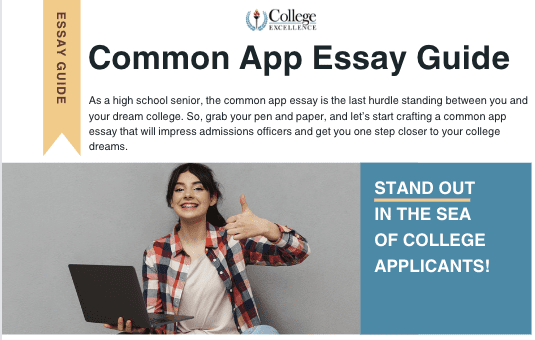When Do You Start Applying For College?
The college application process can be overwhelming. Knowing when to apply is a crucial element that frequently confuses students and parents.
This article aims to demystify the college application timeline. It provides a comprehensive guide on when to start applying for college applications.
Whether you’re a high school student, a parent, or an educator, this article will equip you with the basic knowledge on how to plan your college applications strategically.
By understanding the college application process and timeline, you can reduce stress, meet all deadlines, and increase your chances of admission to your dream college.
Understanding the College Admissions Process
The college admissions process is a multi-faceted journey that requires strategic planning and timely execution. It involves several components, including academic transcripts, standardized test scores, letters of recommendation, and personal essays.
Understanding the intricacies of this process is crucial for successful submissions. It’s not just about meeting deadlines; it’s about crafting a compelling narrative that showcases your unique strengths and potential. This understanding forms the foundation for your college application timing, influencing when you start preparing and when you submit your applications.
In-State, Out-of State or International Colleges?
Choosing a university beyond your home state can be a thrilling journey. It paves the way for novel experiences, varied surroundings, and the ideal academic match.
Researching colleges beyond your home state can be an exciting endeavor that opens up opportunities for new experiences and academic matches. To make an informed decision, explore websites, ranking resources, and college brochures to understand what each school offers.
Factors such as academic programs, location, campus culture, and out-of-state tuition fees should all be taken into consideration. Additionally, applying to international universities involves researching their admission requirements, following specific application procedures, and possibly providing proof of language proficiency and financial support. Starting the application process early is crucial to meet all deadlines and requirements for a smooth application experience.
Pros and Cons of Applying to an In-State and Out-of-State College
When considering whether to apply to an in-state or out-of-state college, there are several pros and cons to weigh:
In-State College:
Pros:
- Cost-Effective: Tuition at in-state colleges is typically lower for residents, making it a more affordable option.
- Familiarity: Being in-state may provide a sense of familiarity with the location and culture.
- Networking: In-state colleges may offer better networking opportunities within the local community.
- Ease of Access: Being closer to home can make it easier to visit family and friends.
Cons:
- Limited Options: Depending on the state, there may be fewer choices for specialized programs or majors.
- Lack of Diversity: In-state colleges may have a less diverse student population compared to out-of-state or international colleges.
- Limited Exposure: Staying in-state may limit exposure to different cultures and experiences.
Out-of-State College:
Pros:
- Diverse Opportunities: Out-of-state colleges offer a wider range of programs and majors, providing more options for academic growth.
- Independence: Attending college out of state can foster independence and personal growth.
- Cultural Exposure: Being in a new state exposes students to different cultures and perspectives.
- Networking: Out-of-state colleges may offer networking opportunities beyond the local area.
Cons:
- Higher Costs: Tuition at out-of-state colleges is usually higher for non-residents, potentially leading to increased student debt.
- Distance from Home: Being far from home may make it challenging to visit family and friends regularly.
- Adjustment: Adapting to a new environment and being away from familiar surroundings can be challenging initially.
Consider these factors when deciding between in-state and out-of-state colleges to find the best fit for your academic and personal goals.
Applying to International Colleges
Applying to colleges outside of the US typically involves researching international universities, understanding their admission requirements, and following their application procedures. It’s essential to check each university’s website for specific instructions on how to apply as an international student.
Common requirements may include academic transcripts, standardized test scores (such as the SAT or ACT), letters of recommendation, language proficiency tests (like the TOEFL or IELTS), and sometimes essays or personal statements.
Additionally, you may need to apply for a student visa and provide proof of financial support.
Start the application process well in advance to meet all deadlines and requirements.
Key Components of College Applications
Whether you apply to domestic or international colleges, the application typically consists of several key components. These include your academic transcript, standardized test scores (SAT/ACT), letters of recommendation, personal essays, and sometimes supplemental materials like portfolios or resumes.
Each component plays a unique role in presenting a holistic picture of you as a prospective student. Your transcript and test scores demonstrate your academic abilities, while recommendation letters and essays provide insight into your character, passions, and potential.
Understanding these components is essential for planning your college application timeline.
The College Applications Timeline: An Overview
The timeline for college applications varies depending on the type of admission sought. There are four main types: early decision, early action, regular decision, and rolling admissions. Each has its own deadlines and implications.
Early decision and early action applications are typically due in November of the student’s senior year. Regular decision deadlines usually fall in January or February.
Rolling admissions, on the other hand, do not have a hard deadline, and applications are reviewed as they are submitted.
- Early Decision: November
- Early Action: November
- Regular Decision: January/February
- Rolling Admissions: No hard deadline
Early Decision Applications
Early decision (ED) is a binding agreement. If you apply early decision and are accepted, you are committed to attending that college. This option is best for students who have a clear first-choice college.
However, it’s important to note that early decision (ED) can limit your ability to compare financial aid offers from multiple colleges. Therefore, financial considerations should be taken into account when deciding to apply early decision.
Early Action Applications
Early action (EA), like early decision, has a November deadline. However, it is not binding. This means that if you are accepted, you are not obligated to attend.
This option allows you to hear back from colleges earlier without the commitment of early decision. It can be a good choice for students who want to keep their options open while still demonstrating interest in specific colleges.
Regular Decision Applications
Regular decision is the most common type of application. Deadlines are usually in January or February of the student’s senior year. This option gives students the most time to prepare their applications.
With regular decision, students have the flexibility to compare offers from multiple colleges before making a decision. This is particularly beneficial when considering financial aid packages.
Rolling Admissions and Other Special Programs
Some colleges offer rolling admissions. This means they review applications as they are received and continue to accept students until all spots are filled. This can be advantageous for students who have their materials ready early or those who need more time.
Additionally, there are special programs like early college high school and dual enrollment that may affect application timing. Always check with individual colleges for their specific requirements and deadlines.
Preparing for College Applications: A Junior Year Checklist
The junior year of high school is a critical time for college preparation. It’s the year when students should start researching colleges, preparing for standardized tests, and considering their college essay topics.
Here’s a general checklist for junior year:
- Start researching colleges: Consider factors like location, size, majors offered, and campus culture.
- Prepare for standardized tests: Plan for SAT/ACT testing, and consider retakes if necessary.
- Begin considering college essay topics: Reflect on personal experiences and passions that could make compelling essay topics.
- Request letters of recommendation: Identify teachers, coaches, or mentors who could write strong letters of recommendation and ask them well in advance.
- Create a college application calendar: Keep track of all important dates and deadlines.
The Summer Before Senior Year: Gearing Up for Applications
The summer before senior year is a crucial time for finalizing college lists and beginning essay drafts. It’s time to narrow down your college choices and start working on the Common Application, which opens on August 1st.
This is also the time to start drafting your college essays. A well-crafted essay can set you apart from other applicants, so take the time to reflect, write, and revise.
A rising high school senior can use their summer strategically to boost their chances of getting accepted into their dream college. Here are some ways to make the most of this time:
Academics:
- Optional Standardized Tests: If the colleges of your choice necessitate SAT or ACT scores, you may contemplate undertaking a summer preparatory course or self-learning program to enhance your scores. Nonetheless, assign priority to this only if it is a requirement of the schools.
- Advanced Courses or Dual Enrollment: Register for rigorous summer classes provided by your high school or a nearby college. This showcases your academic commitment and could possibly grant you college credit.
College Tours:
- Visiting Universities: When feasible, plan visits to your preferred universities. This gives you the opportunity to observe the university environment firsthand and engage with the admissions staff. Many universities also provide virtual tours.
- Look for Scholarships: Begin seeking scholarships primarily for students from different states or those majoring in your field of study. Submission deadlines may be earlier; thus, beginning early is important.
Show Enthusiasm and Versatility:
- Research Opportunities or Internships: Attain an internship or get involved in research programs that align with your academic interests. This indicates your commitment and provides practical experience.
- Community Service: Volunteer for issues you are passionate about. This will demonstrate your social consciousness and versatility.
- Self-Directed Endeavors: If internships are not possible, engage in self-initiated projects that exhibit your zeal and competencies. Such projects may include creative pursuits, research engagements, or public service initiatives.
Make a To-Do List:
- Finalize University Selection: Fine-tune your selection of universities based on your research and experiences gained over the summer. Make sure your list includes “reach,” “match,” and “safety” colleges.
- Brainstorm Essay Topics: Begin brainstorming for your college application essays. Reflect on unique experiences, obstacles, or ambitions that distinguish you.
- Assemble Documents: Accumulate any relevant application documents such as transcripts, forms for recommendation letter requests, and examination results (if needed).
Take Care of Your Mental Health:
- Don’t Overdo It: Remember, summer break is also for relaxation and rejuvenation. Schedule time for hobbies, spending time with loved ones, and de-stressing before senior year.
By using their summer productively, rising high school seniors can present a stronger application and approach the college admissions process with more confidence.
Fall of Senior Year: Submitting Your Applications
Fall of senior year is crunch time for college applications. By now, you should have a good understanding of your academic strengths, interests, and preferred college environment. Refine your college list to a mix of “reach,” “target,” and “safety” schools, considering factors like acceptance rates, programs offered, and out-of-state costs (if applicable).
Remember to check each college’s specific requirements and deadlines. They can vary significantly, and missing a deadline can result in your application not being considered.
Here’s what a high school senior can do to maximize their chances of getting into their dream college during this critical period:
SAT/ACT Testing and Retakes
Fall is also the time for SAT/ACT testing. Ideally, you should have completed these tests by now, but if you’re not satisfied with your scores, consider retakes.
Keep in mind that you need to leave enough time for the scores to be reported. This usually takes a few weeks, so plan accordingly.
Letters of Recommendation and Essays
By now, you should have requested letters of recommendation from your teachers or counselors. Make sure to follow up with them to ensure they submit the letters on time.
Your essays should be in their final stages. Review and revise them multiple times, and consider getting feedback from trusted teachers or mentors.
Financial Aid Applications: FAFSA and CSS Profile
Fall is a great time to research scholarships offered by colleges, national organizations, and even local communities. These can significantly reduce college costs. Familiarize yourself with financial aid deadlines and begin the application process. Don’t forget about the Free Application for Federal Student Aid (FAFSA) and the College Scholarship Service (CSS) Profile often have deadlines that coincide with college application deadlines.
Remember, applying for financial aid does not affect your chances of admission. So, don’t hesitate to apply if you need it.
After Submission: Next Steps and Additional Considerations
Once you’ve submitted your applications, the waiting game begins. Use this time to keep track of your application status and prepare for potential interviews.
Also, be prepared for different outcomes. You may be accepted, waitlisted, or deferred. Understand what each of these outcomes means and plan your next steps accordingly.
Conclusion: Staying Organized and Adapting to Changes
The college application process requires careful planning and organization. Staying on top of deadlines and requirements is crucial for a successful application season.
However, it’s equally important to be adaptable. Changes may occur in your plans or in the admissions process itself. Stay flexible, stay informed, and remember that this is just the beginning of your college journey.
Need Expert Guidance For Your College Applications?
If you require personalized support and guidance to navigate the college application process successfully, book a free consultation with our experienced advisors today!




No responses yet